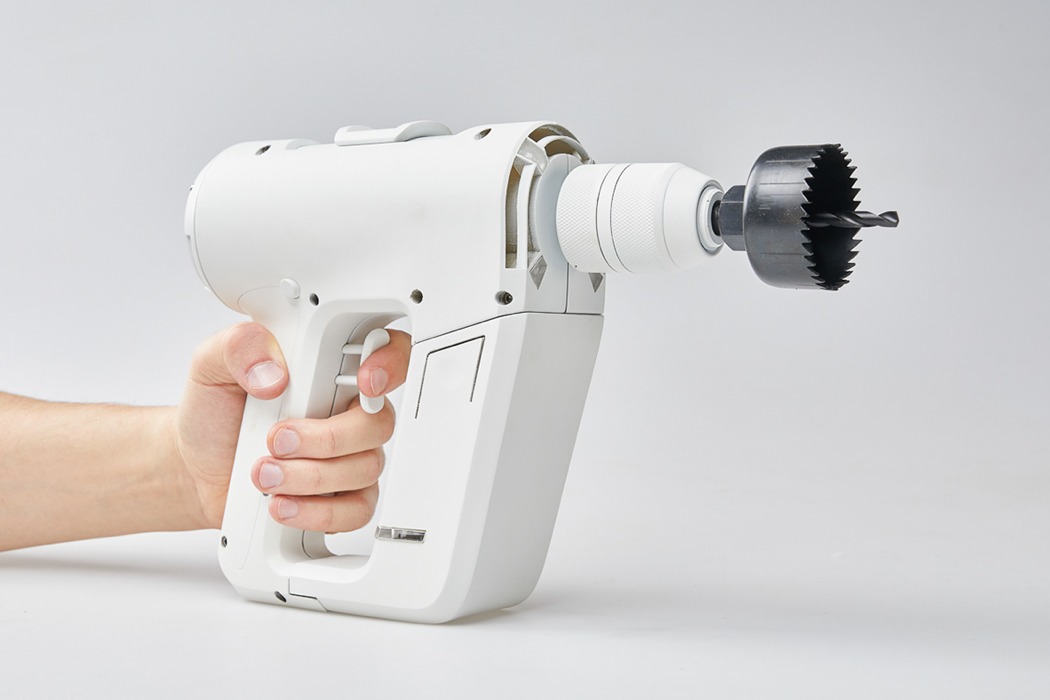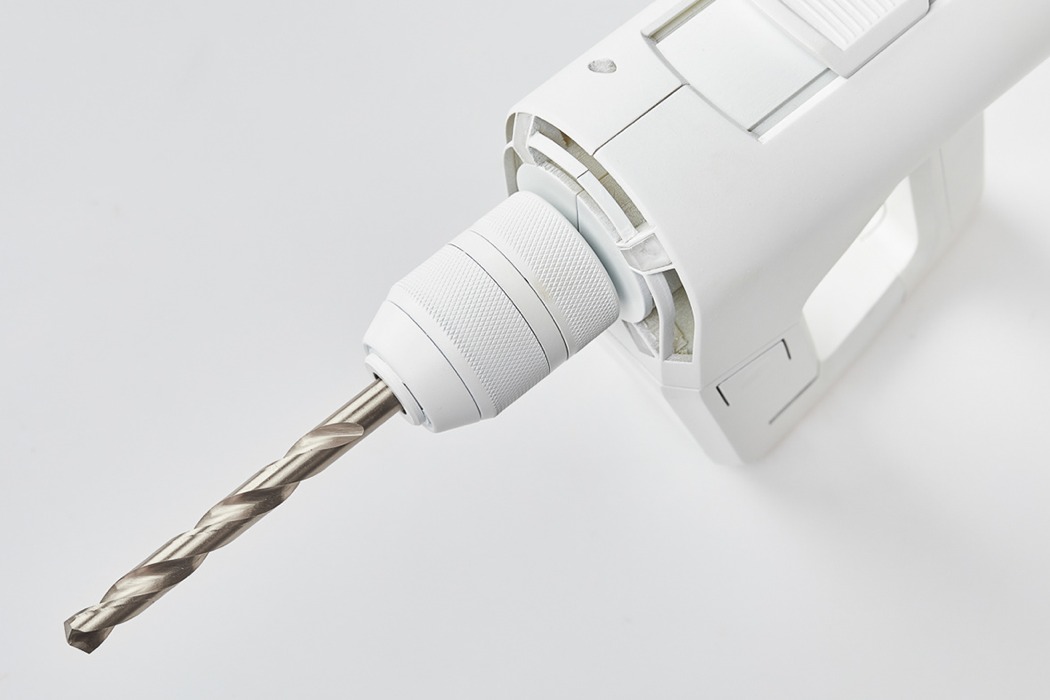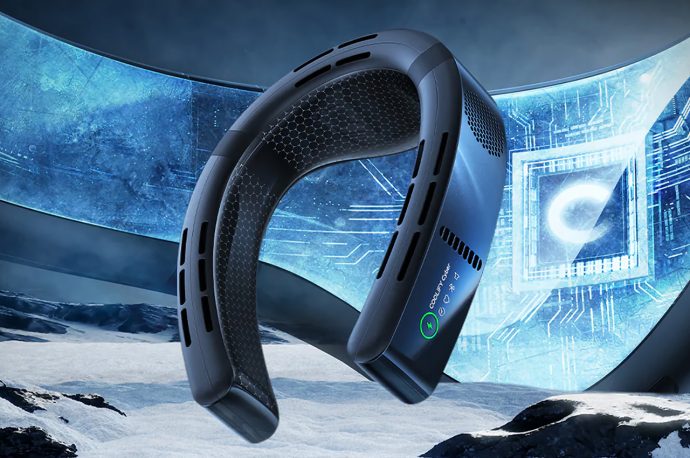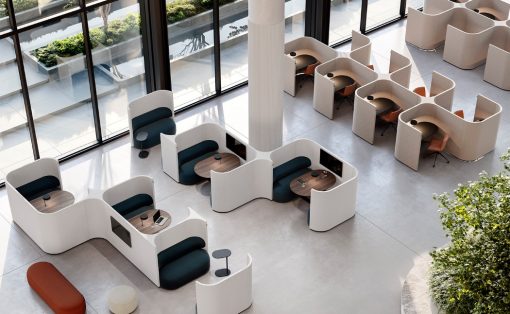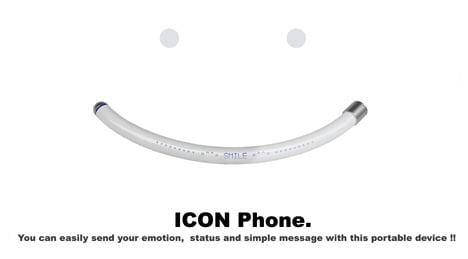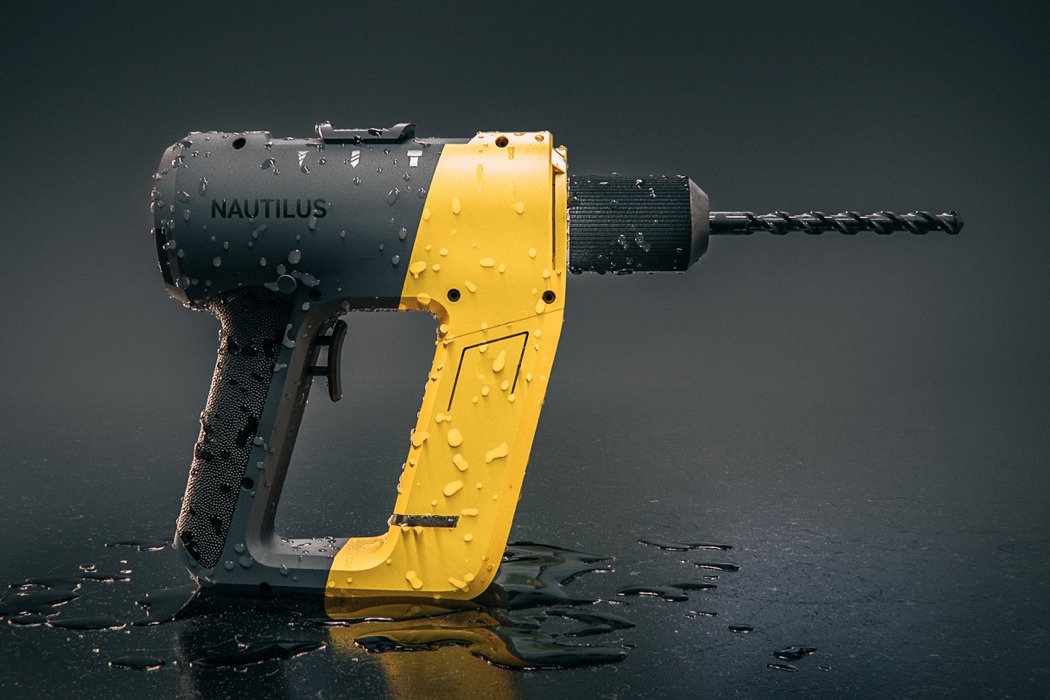
We have featured power drills on Yanko Design in the past, but this particular drill is very different! This is primarily because of the tough environment that it is intended to be used in… water.
The introduction of water brings a plethora of possible issues that must be considered, such as the water pressure that increases with depth, the long airline that comes from the overhead compressor which reduces movement and freedom, and the dust dispersion drastically reduces visibility.
Designer Alexander Kaula has created a drill that vastly increases the ease of use, so much so it allows the product to be used in a domestic environment! Its standout feature is a turbine that’s mounted at the rear, not only does the water flow cool the motor, but it also pulls through dust, allowing much improved visibility. The bold, contrasting colors make Nautilus easy to see underwater while also making it rather exciting to look at!
Designers: Alexander Kaula & Andreas Schmidt
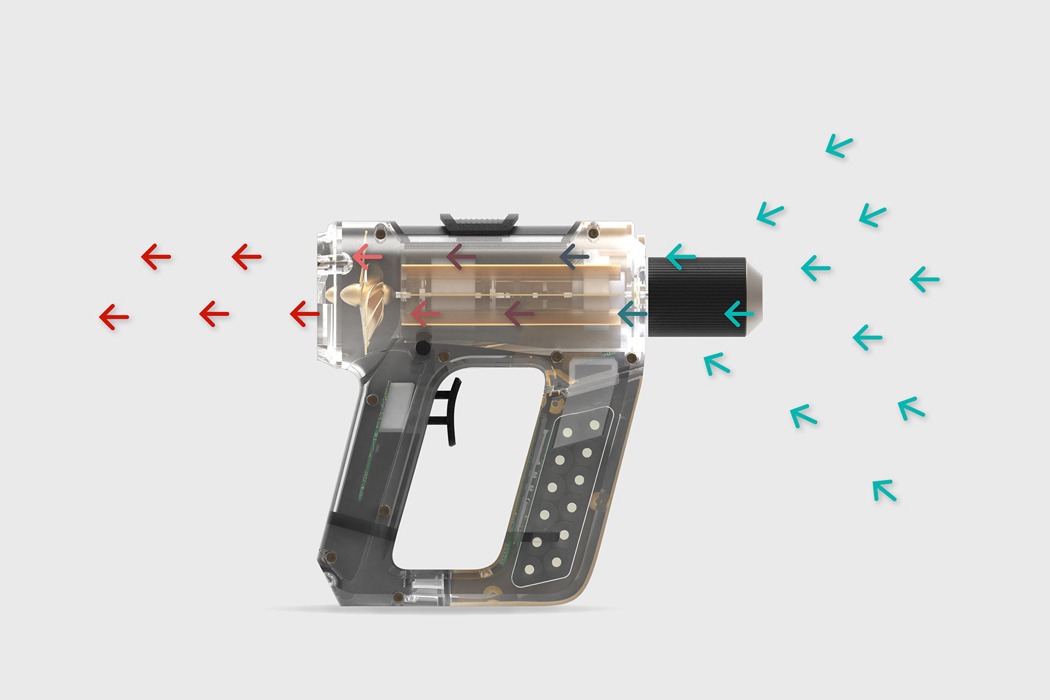
Research
One of the biggest problems is that many materials have only a limited durability due to the alternating dry and wet phases. What makes working under water even more difficult is the water pressure that increases with depth. Therefore, special attention must be paid to the sealing of the housing, as otherwise corrosion and short circuits can occur. Special attention must also be paid to the handling of equipment in such an environment, since in some cases the user lacks a firm stand and thus the counterpressure for drilling and screwing is missing. For this purpose, it had to be ensured that the device could also be operated with one hand during work in order to be secured with the second hand if necessary.
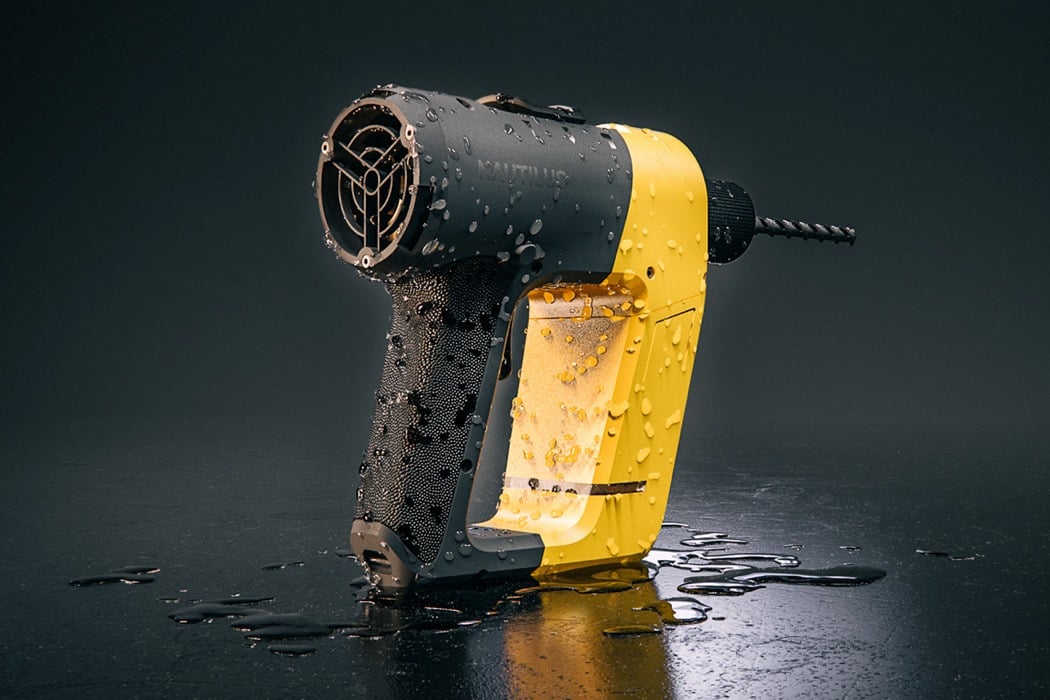
Currently, most underwater tools are usually operated by compressed air, which binds the user to an overhead compressor via a long air line. This leads to enormous restrictions of freedom of movement. Due to water currents and turbulence, the smallest suspended particles do not settle but float around as clouds. Under such visibility conditions it is of great importance for the user to carry a sufficiently light source. Especially in shafts and murky waters it is impossible to work without additional light sources. In addition, when drilling into rock, the finely ground drilling dust mixes with the surrounding water to form a dispersion, making visibility increasingly difficult. Since it is rarely or not at all possible to deposit the tools underwater, it must be possible to secure the tool.
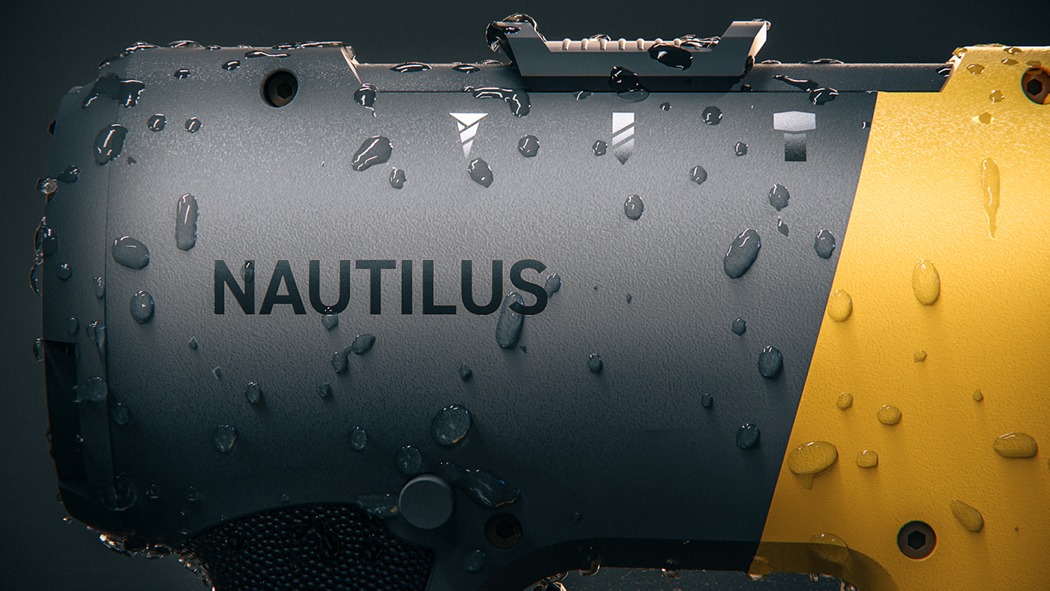
Innovation
Most underwater devices have a metal shell and can therefore release the generated heat into the surrounding water. However, since plastic has up to 2000 times worse thermal conductivity than metal, an alternative had to be found here. Furthermore, the dispersion of drilling dust and water creates a further hurdle for the user in the work process. A technical solution that solves both problems would be a water flow that cools the motor block via cooling fins and carries the dispersion away from the drilling site. The engine block is encased in a second outer casing. A channel is formed inside the device. In the rear area there is an impeller, which is connected to the motor by an electronically controlled clutch. This draws in the surrounding water by rotation and thus also the drilling dust dispersion in front of the cordless screwdriver. The incoming water flows between the inner and outer walls. The inner wall is supported by recessed cooling fins, which The motor block touches, penetrates and projects longitudinally to the outer wall. The water flowing through it cools the motor indirectly and prevents overheating of the tool. In the impeller cover there is a bayonet fitting to which a hose or filter can be attached. Thus, the drilling process is not The resulting dispersion is carried away from the workplace and provides a clearer view. The cooling fins and the impeller are made of aluminium bronze. It should be noted that the cooling fins are integrated during the production of the cover to avoid possible leaks.
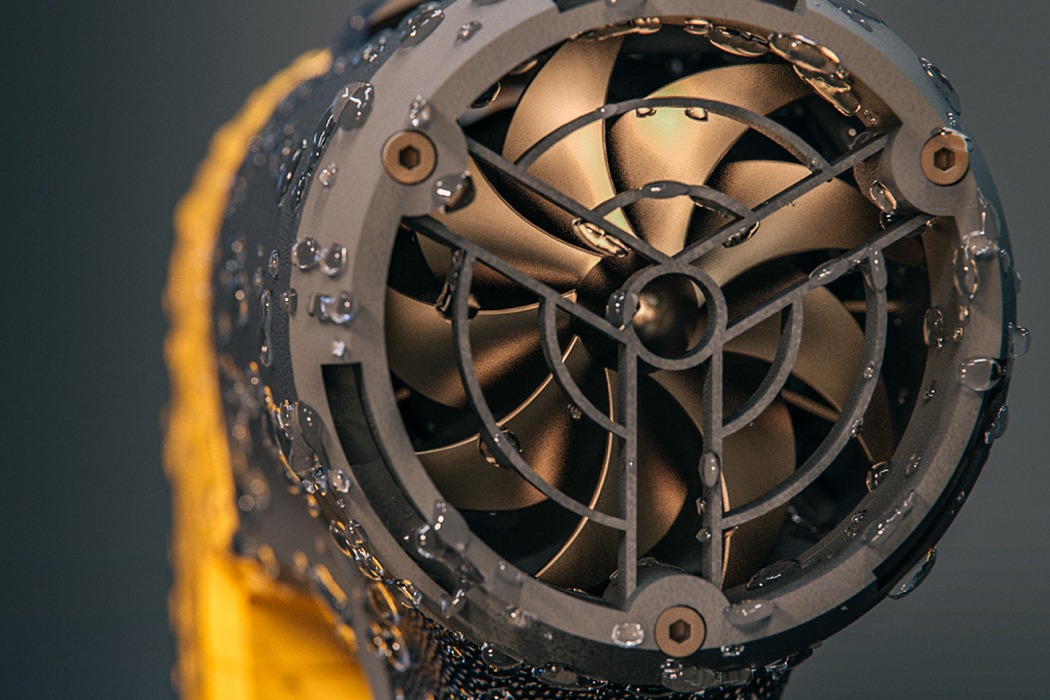
Another advantage of the cordless drill is the ratio of the current from the battery to the tool by induction. This works by means of two induction coils, which are located both in the plastic housing of the battery and in the outer casing of the drill. In order to bridge the shortest possible distance, these are already integrated during the injection moulding process. This proximity allows relatively small coils to be used. Current is conducted into the coil of the battery, which generates a magnetic field which is located between the two coils. The current fed in is thus transformed into the magnetic field. The second coil then converts the energy back into current through the magnetic field and conducts it into the mains of the cordless drill. This prevents open contacts from starting to rust and creates an additional seam which can become leaky. To counteract water pressure at depths of up to 50 metres, the inner shell of the engine block is provided with an increased air pressure. The battery housing is designed to accommodate standard AA batteries. The remaining body volume is used as a pressure vessel. When charging the accumulator, compressed air is supplied again via a valve. When connected to the cordless screwdriver, this is released into the inner cover and thus ensures constantly optimal pressure conditions in the device.
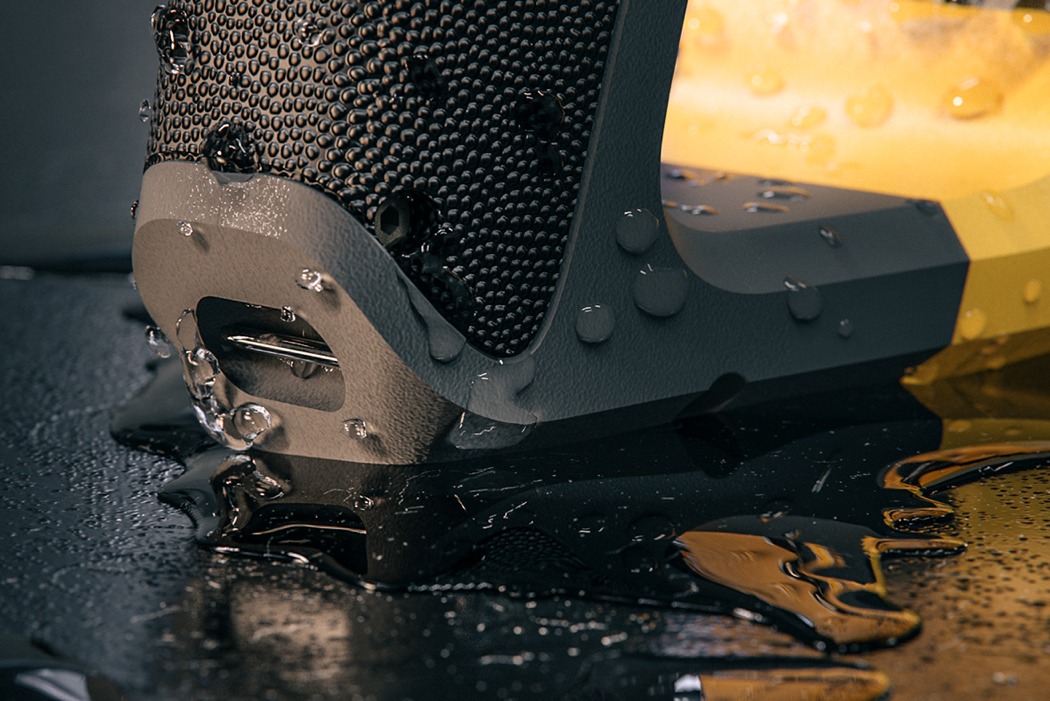
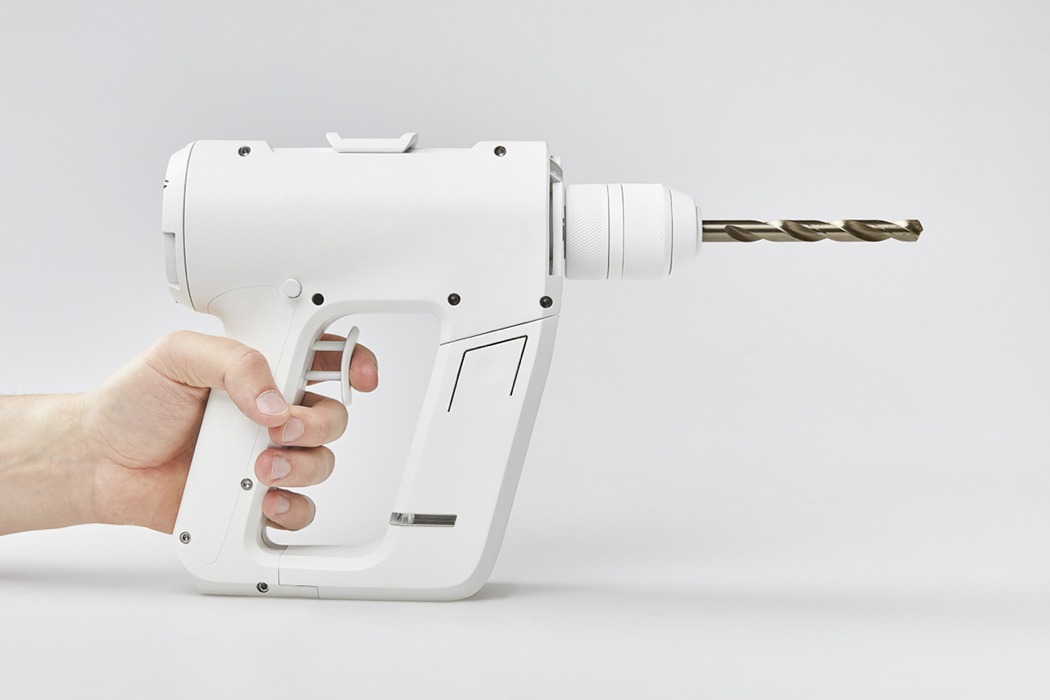
Prototyping
The 1:1 prototype was first designed in CAD and modified for 3D printing. Since we wanted to use components from a functioning cordless screwdriver for our prototype, mountings had to be planned and designed inside the housing. The housing was printed with a Stratasys Objet 3D printer. After the finished prints were removed from the printing bed, the support material was first removed by hand and later with a water pressure jet. After thorough cleaning, the printed holes were cut to a thread using an M3 tap. Some adapters and axles were made from aluminium on a lathe. The housing parts were wet sanded and then primed and painted white. After the innards such as motor, accumulators and circuit boards were installed, the housing could be screwed closed.
